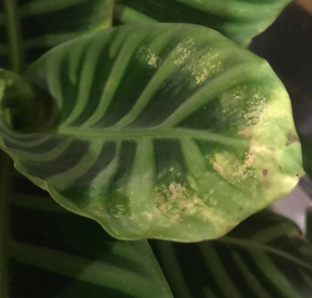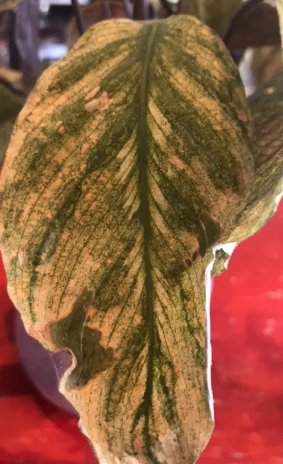Calathea zebrina Plant
A medium-sized houseplant with zebra-patterned leaves, ideal for partial shade and high moisture, with no edible or medicinal properties.
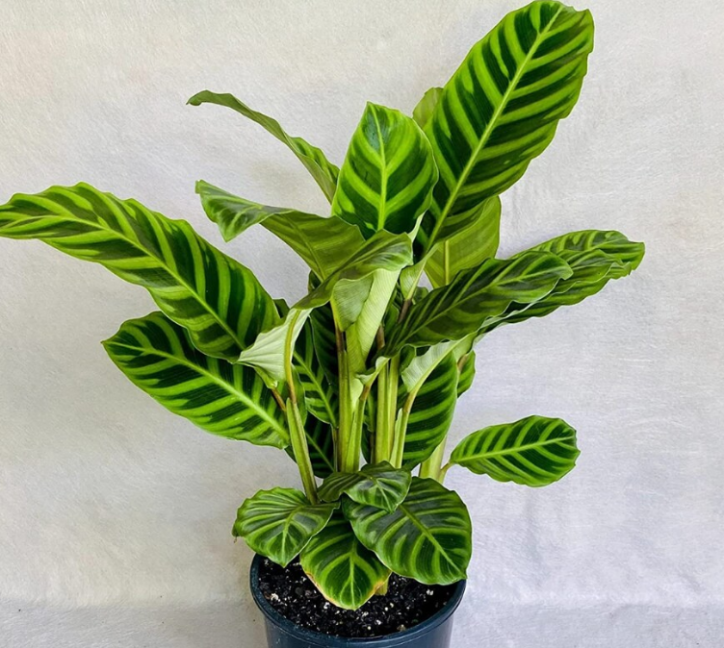
Habit
Herbaceous
Height
50-100 cm
Growth
Medium
Soil
Well-drained, rich soil
Shade
Partial
Moisture
High
Edible
No
Medicinal
No
Origin
Brazil, South America
Climatic Condition
Tropical, Humid
Temperature (°)
18 to 27°C
Humidity (%)
60-80%
Potting media
Peat, coco coir, perlite mix
Fertilizers
Balanced liquid fertilizer
Watering
Keep soil evenly moist
Plant Weight
700-1000 grams
Flowering Time
Rarely flowers indoors
Soil Ph level
5.5 - 6.5
Water Ph level
5.5 - 6.5
Soil EC
1-2 dS/m
Yield Per Plant
Ornamental foliage
NPK ratio
10:10:10
life Span
5-10 years
Health Benefits
Air-purifying properties
Suggested Grow Media or Potting Mix ?
40% loam, 30% sand, 30% compost
Suggested Fertigation/Fertilizers
Apply monthly with liquid organic fertilizer
Common Diseases and Remedies
Powdery Mildew, Root Rot, Leaf Spot, Aphids, Spider Mites
White fungal coating, browning patches, webbing
Neem oil, garlic spray, improve air circulation
HEALTH BENEFITS
Calathea plants, commonly known as "prayer plants," offer several health benefits, including:
1. Air Purification – Calathea plants help improve indoor air quality by filtering toxins like formaldehyde and carbon monoxide.
2. Humidity Regulation – They release moisture into the air, preventing dryness and improving respiratory health.
3. Stress Reduction – Their lush foliage and striking patterns create a calming indoor environment, reducing stress and anxiety.
4. Improved Sleep – The high oxygen release at night makes them excellent bedroom plants, promoting better sleep.
5. Non-Toxicity – Safe for pets and children, unlike many other houseplants.
What Is An Calathea Burle ?
About Calathea Calathea , the furry feather or velvet calathea, is a species of flowering plant in the Marantaceae family, native to Bahia state of northeastern Brazil. The plant's common names are due to its fuzzy, fur-like underleaf texture, which is unusual in its genus.
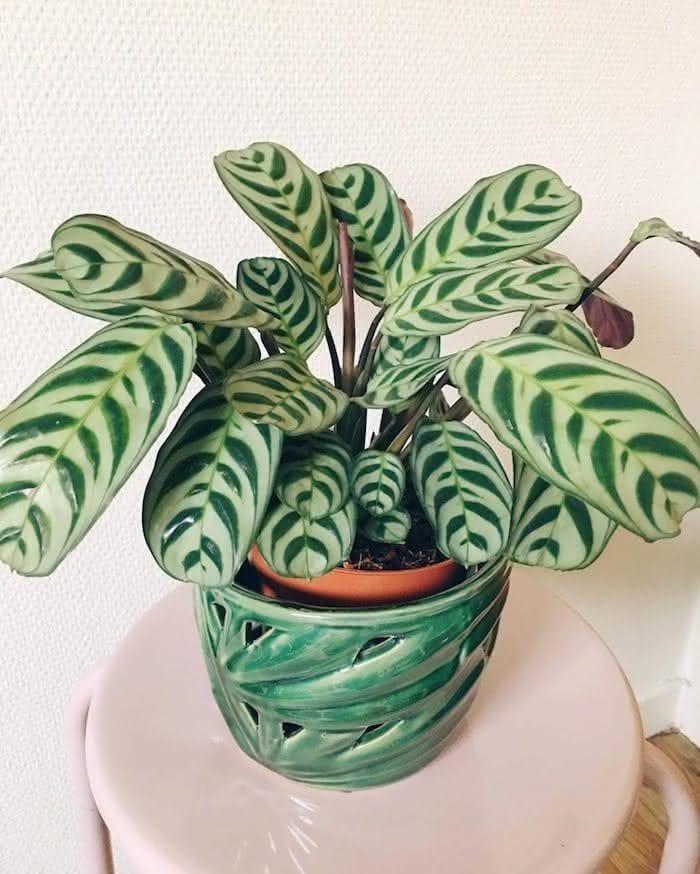
What Are The Different Types Of Calathea Burle ?
1. Calathea lancifolia
The correct botanical name for this plant is Goeppertia insignis, and is commonly known as Rattlesnake Plant.
2. Calathea orbifolia
Reclassified as Goeppertia orbifolia, this is another beauty. Its gorgeous, bright green leaves have subtle silvery stripes.
3. Calathea makoyana
Reclassified as Goeppertia makoyana, this Brazilian native is commonly known as Peacock Plant due to its striking resemblance to peacock feather markings.
4. 5. Calathea roseopicta
Correctly named Goeppertia roseopicta, there are many cultivars of this species with striking foliage.
5. Calathea zebrina
Reclassified as Goeppertia zebrina, this species gets its name due to its zebra-like stripes on the foliage.

How to Care for Calathea Burle ?
1. Location
Calathea Burle , also known as the furry feather or velvet calathea, is a member of the arrowroot family known as Marantaceae. It originates from the tropical rainforests of Central and South America, but is often kept as a houseplant.
2. Sunshine
with most variegated plants, Calathea need plenty of diffused light. Direct sunlight will cause the leaves to fade and lose their markings. They can tolerate some degree of shade, but the more indirect light, the finer the foliage
3. Soil
Soil which retains moisture and drains well is ideal for the growth of Calathea burle. However, it is important to ensure that the soil does not get too soggy. Repotting the plant after every two years should be done if the plant is healthy and growing.
4. Hydration
Drooping leaves - The Calathea Burle prefers his soil to be semi moist without drying out completely between each water. When the soil dries out Mike foliage will start to droop and this will indicate that he needs a drink. If the first few inches of soil is bone dry to touch.
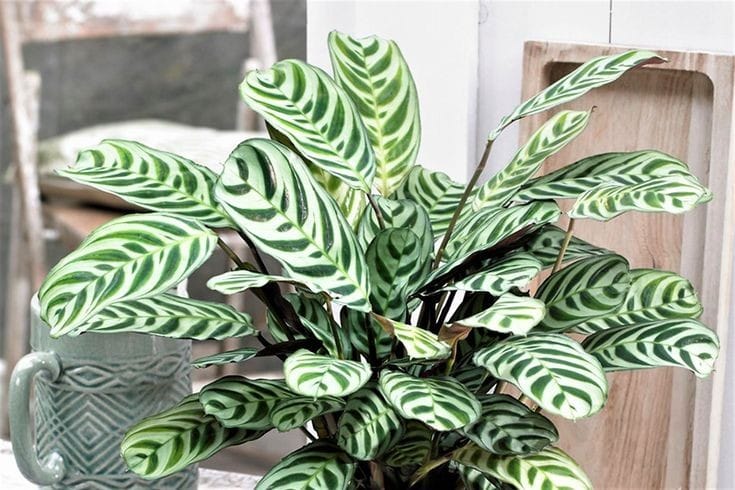
5. Nourishment
FERTILIZING & SOILIt is recommended to use half the strength of nitrogen-rich foliage fertilizer once or twice a month during the growing season. Over-fertilizing should be avoided as it can damage the plant. Soil which retains moisture and drains well is ideal for the growth of Calathea burle.
6. Issue
Make sure you check the soil first before you water, as it may be another cause that watering won’t fix. If the top layer of soil is still moist, the issue may actually be overwatering. Excess moisture in the soil causes the leaves and stems to become mushy due to rot, resulting in the same wilting as with underwatering. Leave the soil to dry out completely or, if the problem is severe, repot into fresh soil to save the rotting roots. Low humidity, lack of light or transplant shock after repotting are other potential causes. Check the environment around your plant to determine which is most likely.
What are the Benefits of Calathea Burle ?
Benefits of Calathea Burle Plant: It actively filters out common indoor pollutants such as formaldehyde, benzene, and xylene, helping to improve the air quality in your home or office. This can lead to better respiratory health and overall well-being.
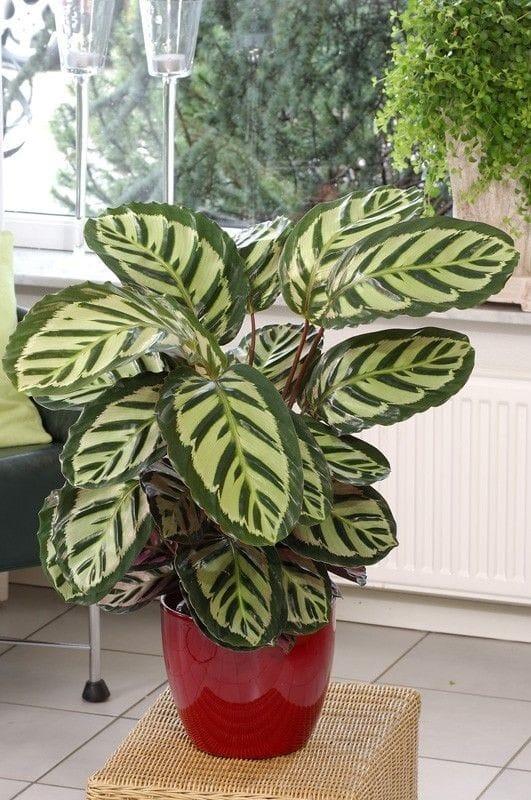
FAQs About Growing Calathea Burle
1. Where do you put Calathea Burle ?
The Calathea Burle prefers a medium light. If he is placed in a bright room, keep him away from any windows as the bright sun will burn his leaves or cause them to curl. While Mike likes medium light he will be tolerant of lower light in the winter months when sunlight is minimal.
2. Are Calathea Burle hard to care for ?
Calathea must be kept in damp soil at all times, but definitely do not allow the plant to sit in water or in very wet soil. Think 'little and often' as a watering policy
3. Does Calathea purify air ?
Known for the unique leaf movements of patterned foliage, Calathea plants have an exotic feel that will brighten up any room. With their beautiful yet unique colouring, the Calathea plant purifies the surrounding air by filtering out a multitude of compounds that are poisonous.
4. Is Calathea good luck ?
Even better, the Calatheas plant is known to purify the air and promote a better indoor environment. Jade: In feng shui, this plant is also known as the money tree because the round leaves symbolize good fortune (this can come in the form of money, health)
